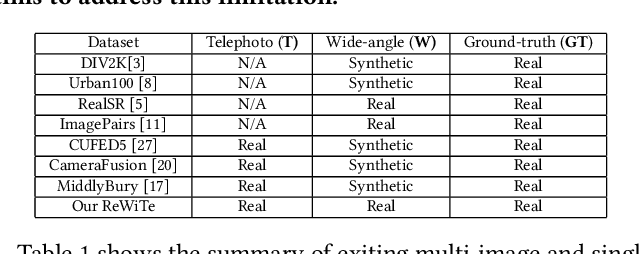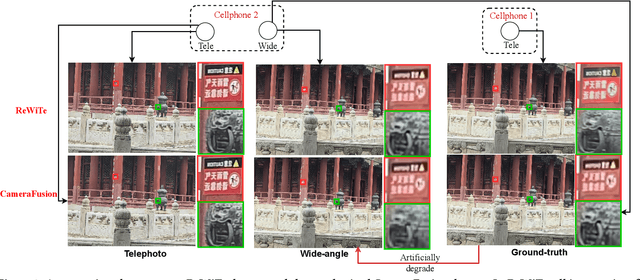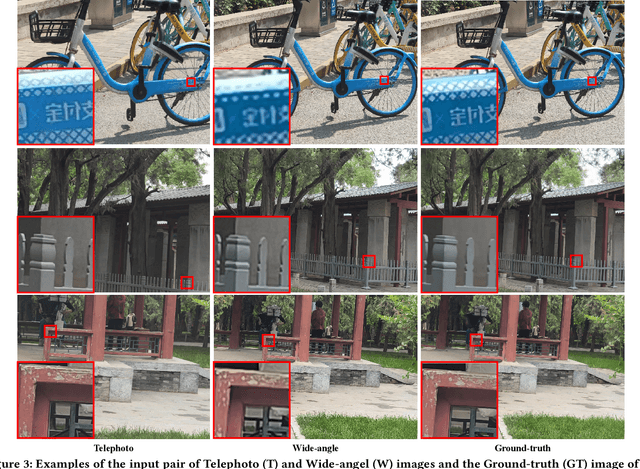ReWiTe: Realistic Wide-angle and Telephoto Dual Camera Fusion Dataset via Beam Splitter Camera Rig
Paper and Code
Apr 16, 2024



The fusion of images from dual camera systems featuring a wide-angle and a telephoto camera has become a hotspot problem recently. By integrating simultaneously captured wide-angle and telephoto images from these systems, the resulting fused image achieves a wide field of view (FOV) coupled with high-definition quality. Existing approaches are mostly deep learning methods, and predominantly rely on supervised learning, where the training dataset plays a pivotal role. However, current datasets typically adopt a data synthesis approach generate input pairs of wide-angle and telephoto images alongside ground-truth images. Notably, the wide-angle inputs are synthesized rather than captured using real wide-angle cameras, and the ground-truth image is captured by wide-angle camera whose quality is substantially lower than that of input telephoto images captured by telephoto cameras. To address these limitations, we introduce a novel hardware setup utilizing a beam splitter to simultaneously capture three images, i.e. input pairs and ground-truth images, from two authentic cellphones equipped with wide-angle and telephoto dual cameras. Specifically, the wide-angle and telephoto images captured by cellphone 2 serve as the input pair, while the telephoto image captured by cellphone 1, which is calibrated to match the optical path of the wide-angle image from cellphone 2, serves as the ground-truth image, maintaining quality on par with the input telephoto image. Experiments validate the efficacy of our newly introduced dataset, named ReWiTe, significantly enhances the performance of various existing methods for real-world wide-angle and telephoto dual image fusion tasks.
 Add to Chrome
Add to Chrome Add to Firefox
Add to Firefox Add to Edge
Add to Edge